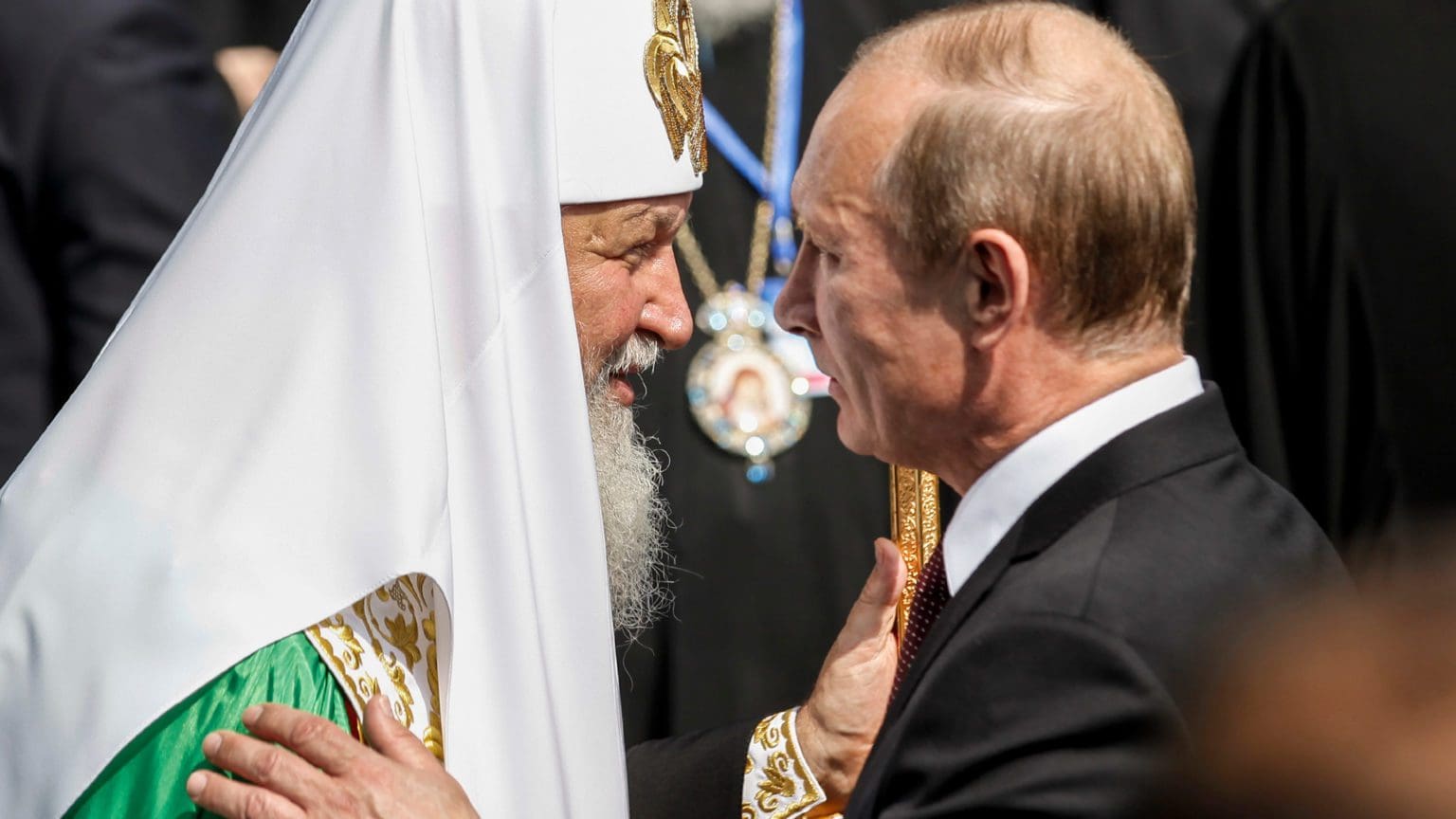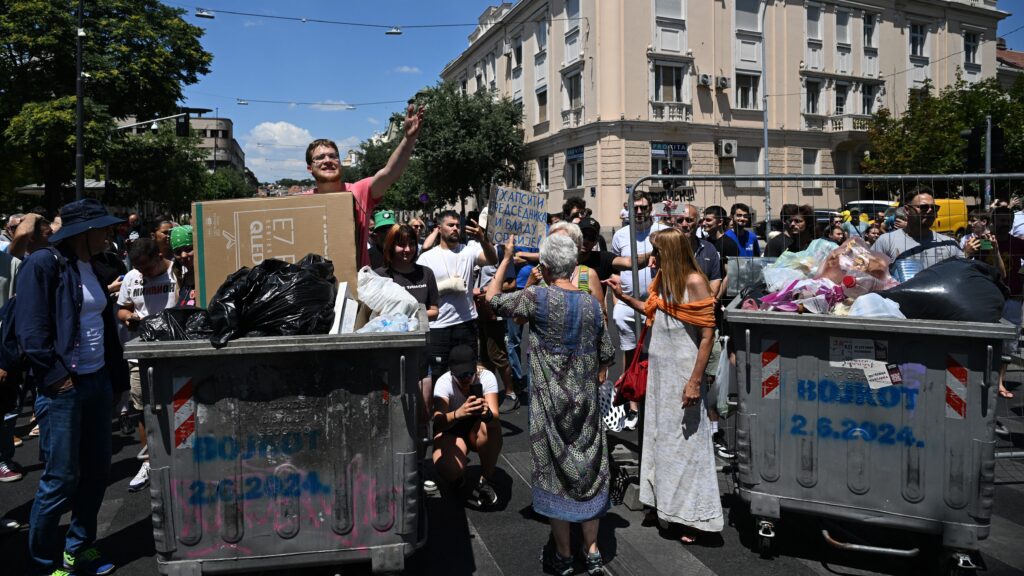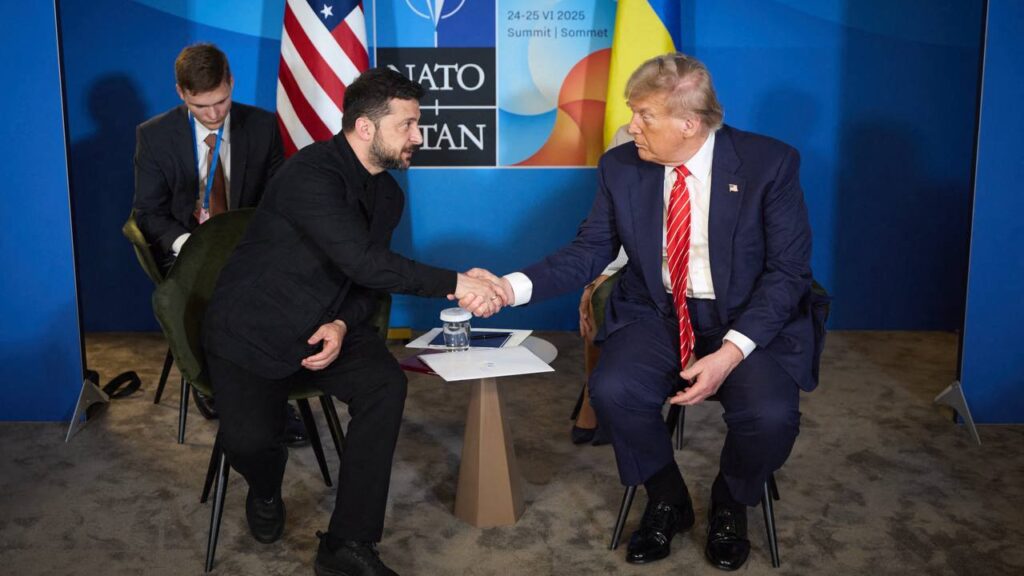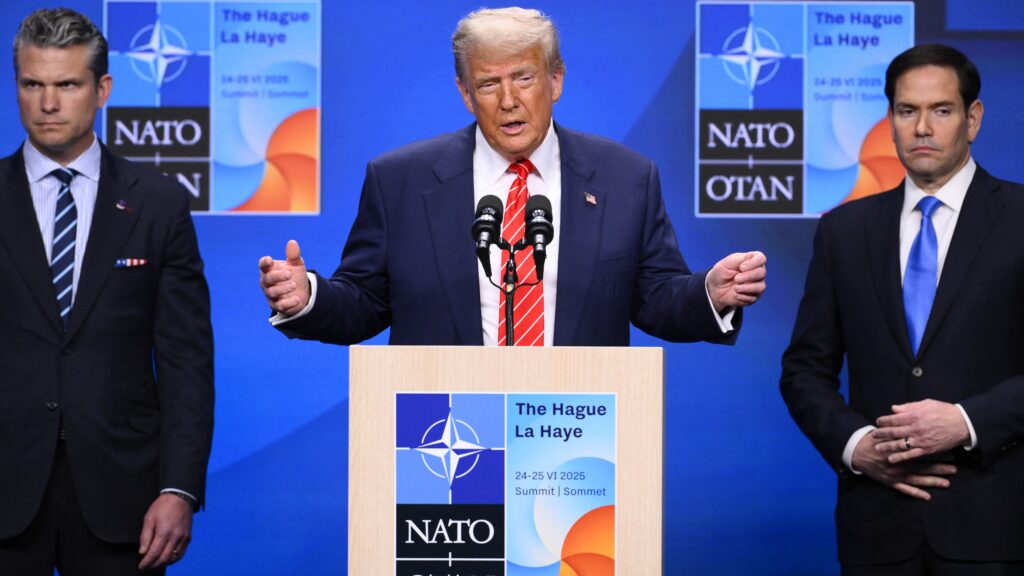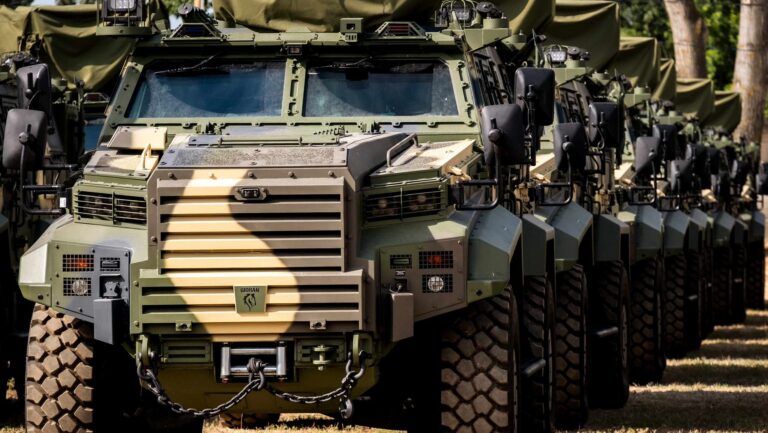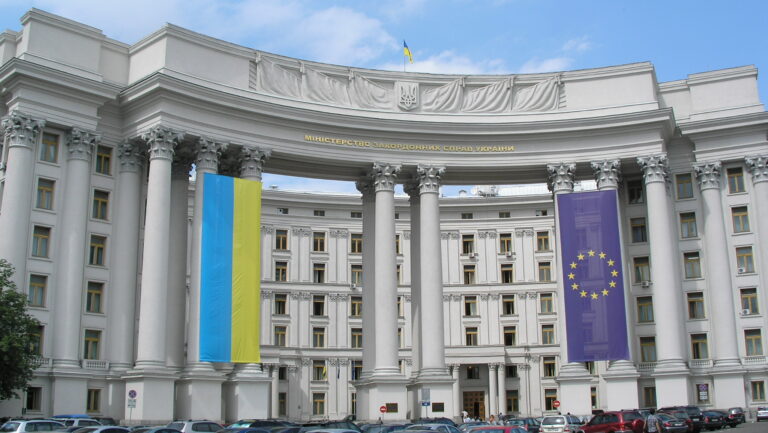The ideological vacuum created by the fall of Communism presented an opportunity for the Russian Orthodox Church to regain its moral-spiritual influence in Russia. However, while more and more people are associating Orthodox Christianity with Russian national identity, support for Vladimir Putin’s policies still poses a serious moral risk for the Church – especially so since the military offensive against Ukraine. To fully grasp the situation of Russian Christianity, it is necessary to have an understanding of the historical vicissitudes of the Church.
Since the Russian military offensive, a number of analyses and newspaper articles have been highly critical of the role of the Russian Orthodox Church and Christianity in Vladimir Putin’s political regime. Some political experts point out that Putin is just using the Church for communication and ideological reasons, in order to strengthen his power. Other analysts, on the other hand, have suggested that Putin does have strong ties to the Church, and that this spiritual connection influences his policies.
The relationship of the Russian Orthodox Church and Orthodox Christianity in general with politics is sorely tainted by a heavy historical legacy
The reality is that the relationship of the Russian Orthodox Church and Orthodox Christianity in general with politics is sorely tainted by a heavy historical legacy. The will of the Russian president is far from being the only factor that unidirectionally determines the decisions of the Church. As far as Putin is concerned, his family heritage[1]–in particular his mother’s personal faith– may indeed have played a role in his relationship with Christianity. But in fact, what really matters for him is what he believes is the common interest of the Russian political leadership and the Orthodox Church in tackling the political and spiritual challenges of the 21st century. To understand this relationship of interest, it is important to be aware of the history of the Orthodox Church and its struggles against political power.
The Intertwining of Church and State in the East
To understand the historical role of the Russian Orthodox Church, it is necessary to go back as far as the Roman Empire. The first political “breakthrough” of Christianity came under the Emperor Constantine, who granted legal recognition to the “new religion” in 313. It was also in this century, around 391, that the Emperor Theodosius banned pagan cults, making Christianity the state religion of the empire.
Constantine the Great had moved the capital of the Roman empire to Byzantium (later renamed Constantinople). Although he is regarded as the first Christian emperor, he refused to be baptised until the last days of his life. According to some historians, Constantine did this deliberately, so that Christian morality would not be an obstacle to his exercise of power (which was brutal sometimes). This, in turn, put the emperor in practice above the church.
The next important turning point came during the reign of Justinian, when the church was given an essentially “civil, profane status and the empire became a “Christian state”. Of particular importance was Justinian’s Sixth Amendment, which declared the ‘symphony’ of church and state, with the authority of the church also constituting a moral constraint for the emperor.[2] However, in practice this also meant brutal measures, as rulers enforced the moral foundations of Christianity in a ruthless manner.
Some historians, however, argue that caeseropapism, the political system in which the head of the state is also the head of the church, is still a difficult issue in relation to the Eastern and Western traditions of the Church. In the Byzantine Empire in the East, heated theological disputes were for a long time more prevalent than in the West, where the will of the pope and the bishops was more directly imposed and there was no direct contact between the clergy and the laity. Moreover, in secular –“non-spiritual”– matters, Western popes were, according to some historians, mere strategic instruments in the hands of rulers until the eleventh century.
Russia and Christianity – A Thousand Years of History
Western Slavs came into contact with Christianity primarily because of the tension between the Franks and Byzantium. The growing power ambitions of the Frankish Germanic tribes put pressure on the Western Slavs. The Slavs therefore eventually appealed to Byzantium to send missionaries to them. The Roman ruler did so and sent two missionaries who understood the Slavic language, Constantine (later better known as Cyril) and Methodius. Although the Franks did not tolerate this and sought to limit the spiritual influence of Byzantium, the missionaries successfully established the first contact between Slavs and Eastern Christianity. ‘The mission to Moravia was an impressive manifestation of Byzantine religious and cultural expansion and belongs to the same great decade as Constantinople’s efforts to cement contacts with the Slavic South and East,’ wrote Roman Jakobson.[3]
Some prominent historians, such as Anton Karthasev, have further differentiated six important periods in the process of the formation of the Russian Church.[4] The first phase is the period before the Mongol campaign and the spiritual turn of the “Russians” in Kyiv. At this time, Christian bishops and presbyters enjoyed considerable authority over secular leaders. The second phase is the period of the devastating conquests of the Tatars, the “Dark Ages” for the Russian people according to historians. This period lasted for over 200 years and the Mongol influence had a significantly negative impact on the authority of Christianity. This period also saw the rise of the city of Moscow as a spiritual and regional centre.
The third era was marked by the dramatic fall of Constantinople and the ensuing Islamic conquest: the Russian Church ceased to be an ecclesiastical dependency and Moscow became an independent patriarchate in 1589. Secular power was regained by Tsar Peter the Great, who in 1721 ended Moscow’s ecclesiastical autonomy and established state control over the Church. This marked the beginning of the fourth period, with the institution of the Holy Synod set up by Peter symbolising the subordination of the Church. The state bureaucracy oversaw the ecclesiastical organisational system, a theologically untenable state of affairs for the Christian church. Nevertheless, this system of relations persisted until 1917, the year of the outbreak of the Revolution. After the Revolution, the Church attempted, for a brief period, to restore its autonomy and regain patriarchal status, but this was unsuccessful due to the Communist takeover and the brutal reign of terror that followed. The period after the fall of Communism and the dissolution of the Soviet Union is the sixth phase, in which the Church once again sought to regain its influence and find a strong position in the face of political power.
Putin and the Return of the “Symphony”
After the fall of the Soviet Union, Orthodox Christianity found itself in a special situation in Russia. In the reorganised Russian state, the Church was given the opportunity to grow at an organisational level, as well as to extend its spiritual influence. ‘After the fall of communism a big ideological vacuum was created. The place which had been previously occupied by communism…in the dominant Orthodox Christian states became empty. This place was filled by Orthodox Christianity, and the Orthodox Christian Churches,’ Miroljub Jevtic explained.[5]
This vacuum–and the chance for “rehabilitation” after hundreds of years of marginalisation–was well exploited by the Orthodox Church. According to the Pew Research Center, in 1991 only 37 per cent of Russians identified themselves as Orthodox Christians. A quarter of a century later, in 2015, the figure reached 71 per cent. More than half of Russians believe that Orthodox Christianity is fundamental to Russian national identity.[6] At the fall of communism, the Russian Orthodox Church had 67 dioceses and 6,893 parishes; today it has more than 130 dioceses and over 25,000 parishes.
The Orthodox Church has a major role to play in this
The key question is therefore how the Church uses its influence in the political sphere. This is a very complex issue, according to many experts, for example Marko Vekovic’s analysis shows that the Church has been both a force for democratisation and a force for the central state power over the last two decades. ‘It was after the changes in Russia at the end of the 20th century when the preconditions made it possible to form Church-state relations which would be suitable for the Church and its canonical norms on one side, and the political and legal foundations of a modern State on the other.’ According to Vekovic, although there were clear signs of the consolidation of democracy in Russia, the democratic process has failed, especially since Vladimir Putin took power, and the consolidation of authoritarian power is a clear fact. The Orthodox Church has a major role to play in this. ‘Putin’s era not only changed the face of Russia as a world power. It also changed the role of the ROC which had become his very close ally since his first mandate as president. However, was this relationship really so harmonious? The simple answer to this question would be: no,’ explained Vekovic.[7]
A fundamental document for the cooperation between Putin and the Church was ‘The Basis of the Social Concept’. This document, following Justinian’s Sixth Novel, re-emphasises the importance of the “symphony” of the relationship between church and state, and lays down principles for the relationship between church and nation, church and state, church and politics, and church and mass media. The Russian Orthodox Church’s relationship with the nation is very special because, unlike other Christian churches, it thinks in a “national framework”, perceiving patriotism (nationalism?) as a positive thing. Moreover, the Church does not advocate the separation of church and state, since historical experience–see above–has shown that this always leads to the persecution of the Church. The symphony of church and state is, according to the document, a matter of mutual respect, and the church does not intend to intervene directly in political affairs. Nevertheless, the two institutions identify ‘common causes’ (e.g. the maintenance of international peace) in which they intend to support each other.
Common Ground: “Anti-Westernism”
The document makes clear the contradictory nature of the Russian Orthodox Church’s activities, as the concept is that the church does not, in theory, wish to provide specific political support to any party or politician. However, reality and practice are different, as shown by the Church’s condemnation of the conflict in South Ossetia in 2008 and its support for the occupation of Crimea in 2014. Another important document is ‘The Russian Orthodox Church’s Basic Teaching on Human Dignity, Freedom and Rights’, published in 2008. According to the analysis of experts, this already symbolises a distancing from the “Western liberal” concept of human rights, the Church having aimed rather at defending traditional values. ‘From 2000 to 2008 the discursive strategy of the Moscow Patriarchate with regard to human rights changed. It evolved from a clear-cut rejection of human rights as a western invention to endorsing human rights as a concept, but utilising the concept in a way that was opposed to the liberal and egalitarian evolution of the international human rights system,’ explained Kristina Stöckl.[8]
This is an important link between Putin’s policies and the attitude of the Orthodox Church. The common ground is the rejection, or at least the restriction, of Western-style liberalism. There are, of course, not only ideological reasons for this on the part of the Putin regime, but also a serious world political background. In the struggle between world powers, Putin is better able to define the contours of his own empire by relying on “traditional ” values. This also provides him with arguments in international political debates. For the Russian Orthodox Church, too, it is not only a question of “spiritual”, theological considerations, but also of self-defence against the rise of pluralism. Thus, in addition to the historical relationship between church and state, Putin and Orthodox Christianity in Russia also have a common interest in these decades.
At the same time, as Vekovic pointed out, there have been points of tension between the Russian president and the Church. Such were for instance the tensions over Georgia, and the support of some members of the Church for the 2012 protests against the Russian president. There have been two main turning points in the past decade that have tended to strengthen the relationship between the Russian political leadership and the church (Vekovic said it was actually more of an ‘asymmetrical symphony’, with the church trying to adapt to political power rather than balance it). For example, demands for LGBTQ rights and feminists have posed a serious threat to the Orthodox Patriarchate.[9]
The Ukrainian – Russian Religious Conflict and the “New Israel”
Officially, the Russian Orthodox Church has expressed its support for the occupation of Crimea by stressing that the mission of peace requires that the right of self-determination of the people of Crimea be accepted. But the reality is that in the background, serious religious differences have also strengthened the Church’s endorsement of Putin’s policy. For the Russian Orthodox Church, the fact that more than 30 per cent of its parishes are located in Ukraine was clearly not an irrelevant consideration. After Russia’s military offensive that started in February 2022, several newspapers published lengthy analyses of the Russian Orthodox Church’s attitude towards Ukraine. The analyses highlighted that the Orthodox religion in Ukraine is divided and its situation is complex situation, especially since the fall of the Soviet Union and Ukraine’s independence. ‘If Ukraine remains an independent country, it is conceivable that the Church belonging to the Russian Patriarchate and the independent Ukrainian Orthodox Church will in the long run move closer together and later become one Church. The precondition for this is that they overcome their theological differences,’ said religious historian Reinhard Folgaus. [10]
The situation changed dramatically in 1685, when the Patriarch of Moscow essentially annexed the Patriarchate of the city of Kyiv
The reality, however, is that there is a very complex religious relationship and tension between Kyiv and Moscow in terms of history and theological understandings. The united Orthodox Church was established in the territory of the Kievan Rus, also known as “Old Russia”, some 1,000 years ago, when the city of Kyiv had a prominent cultural and economic role. At that time, the Orthodox Church was still linked to Constantinople, and this link is still preserved today by the Ukrainian Orthodox Church. The situation changed dramatically in 1685, when the Patriarch of Moscow essentially annexed the Patriarchate of the city of Kyiv. This had both practical and spiritual significance in the history of the Orthodox Church. In addition to the strengthening of Moscow, this may also have strengthened Orthodox spirituality in the fifteenth and sixteenth centuries in what is now Ukraine. For example, the first higher Orthodox educational institution was founded in the city of Ostroh in the 1570s, and the religious influence of Kyiv was reasserted from the late sixteenth century onwards. ‘From 1448 to the declaration of Moscow as a patriarchate in 1589, all metropolitans of Moscow were native Russians, while from 1458 to the subordination of Kyiv to Moscow in 1686 most metropolitans of Kyiv and bishops of the metropolitanate were native Ruthenians. The final division of Ruthenian and Muscovite churches and their different experiences from the fifteenth to seventeenth centuries furthered the evolution of distinct religious traditions,’ wrote Frank E. Sysyn.[11] Subsequently, well-educated Ruthenian (Ukrainian) church leaders were already shaping the unified Russian Orthodox Church from within, and in the first half of the 18th century many Ruthenian clerics exerted considerable influence in shaping the relationship between the church and the increasingly centralist Russian state.[12] ‘The legacy of the long Russian domination over the Ukrainian Orthodox Church not only placed the latter outside the mainstream of Ukrainian cultural and political revival; it also made the church into an ideological and institutional weapon determined to block the progress of the Ukrainian people toward nationhood and political independence,’ argued Bohdan R. Bociurkiw.[13]
In 1917, the revolution in Russia was also a catalyst for the Ukrainian independence movement, which strengthened the idea of ecclesiastical independence. However, after the proclamation of the first independent Ukrainian state, this independent church was not yet a reality, and it also required the political influence of the Bolsheviks, who wanted to weaken the organisation of the Russian Orthodox Church. This is how the Ukrainian Autocephalous Orthodox Church was able to function between 1921 and 1936. After the fall of the Soviet Union, independent Orthodox Christian organisations were re-established in Ukraine, including the Ukrainian Orthodox Church under the Patriarchate of Kyiv.
Also interesting in the tradition of the Orthodox Church and reinforcing the link between the Church and the head of state is the theological identification of Russia with the metaphors found in the Bible. Its origins date back to the “Times of Trouble” (1598 – 1613), a period of political anarchy, war (Polish-Russian war) and one of the worst famines in history (30 per cent of the Russian people died of starvation). The fate of the Russian people and the Russian state was identified with the story of Israel in antiquity, as described in the Bible, in prayers to God. The captivity of the Jewish people in Babylon and the sufferings and pains of exile were reflected in the prayers and sermons of Orthodox Christians. And because of the anarchy, the people waited for the new Messiah-couple to bring order to the chaos. Thus Russia emerged as the “New Israel” in the Orthodox tradition. ‘Despite the unpredictable twists and turns of history, the idea of Russia as the New Israel has even begun to reemerge in the twenty-first century as a potential guiding principle of the Orthodox Christian outlook,’ emphasized Isaiah Gruber.[14]
[1] Ben Ryan, ‘Vladimir Putin’, in Nick Spencer (ed.), The Mighty and Almighty, London, Biteback Publishing, 2017, p. 122.
[2] John Anthony McGuckin, The Orthodox Church. An Introduction to its History, Oxford, Blackwell Publishing, 2008, p. 393.
[3] Roman Jakobson, ‘The Byzantine Mission to The Slavs’, in Ostrogorsky-Jakobson-Obolensky, The Dumbarton Oaks Center for Byzantine Studies, Washington, Trustees for Harvard University, 1965, p. 258.
[4] Dimitry Pospielovsky, The Orthodox Church in The History of Russia, Crestwood, Vladimir’s Seminary Press, 1998, p. 15.
[5] Miroljub Jevtic, The Eastern Orthodox Church and Contemporary Religious Processes in the World, in International Problems, Vol. 65./No.4., 2012, p. 427.
[6] Pew Research Center, ‘Religious Belief and National Belonging in Central and Eastern Europe’, (10 May 2017), Pewresearch.org, p. 6, https://assets.pewresearch.org/wp-content/uploads/sites/11/2017/05/15120244/CEUP-FULL-REPORT.pdf, accessed 9 June 2022.
[7] Marko Vekovic, Democratization in Christian Orthodox Europe, New York, Routledge Studies, 2021, p. 120.
[8] Kristina Stoeckl, ‘The Russian Orthodox Church as Moral Norm Entrepreneur,’ Religion, State and Society, Vol. 44, No. 2, 2016, p. 134
[9] Thomas Grove, Russia passes anti-gay law, activists detained, (11 June 2013), Reuters, https://www.reuters.com/article/us-russia-gay-idUSBRE95A0GE20130611, accessed 12 June 2022.
[10] MDR Kultur, ‘Interview mit Reinhard Folgaus: Warum setzt sich die russische-orthodoxe Kirche nicht deutlich für Frieden ein?’, (11 March 2022), Mdr.de, https://www.mdr.de/religion/krieg-ukraine-russland-patriarch-putin-werte100.html, accessed 13 June 2022.
[11] Frank E. Sysyn, ‘The Formation of Modern Ukrainian Religious Culture: The Sixteenth and Seventeenth Centuries’, in Geoffrey A. Hosking (ed.), Church, Nation and State in Russia and Ukraine, New York, Palgrave, 1991, p. 6.
[12] Barbara Skinner, The Western Front of the Eastern Church, DeKalb, Northern Illinois University Press, 2009, p. 92.
[13] Bohdan R. Bociurkiw, ‘The Rise of the Ukrainian Autocephalous Orthodox Church’, in Hosking: Church, Nation (…), New York, Palgrave, 1991, p. 228.
[14] Isaiah Gruber, Orthodox Russia In Crisis. Church and Nation in the Time of Troubles, DeKalb, North Illinois University Press, 2012, p. 184.

